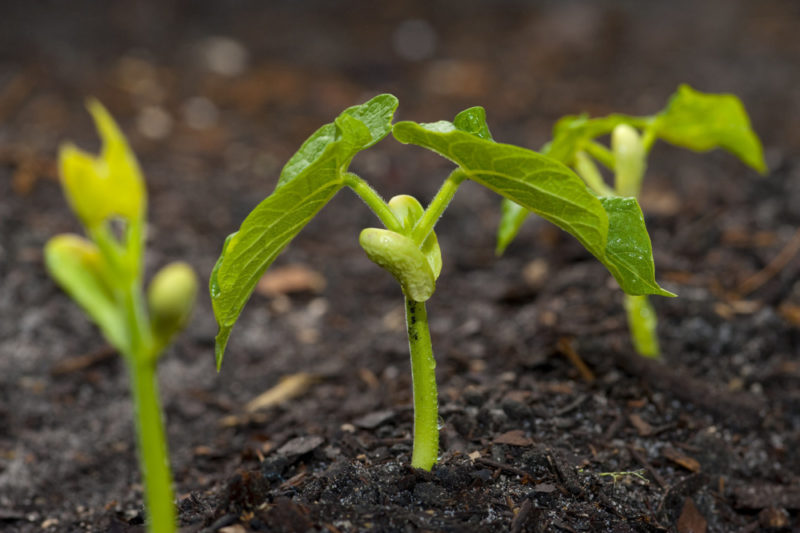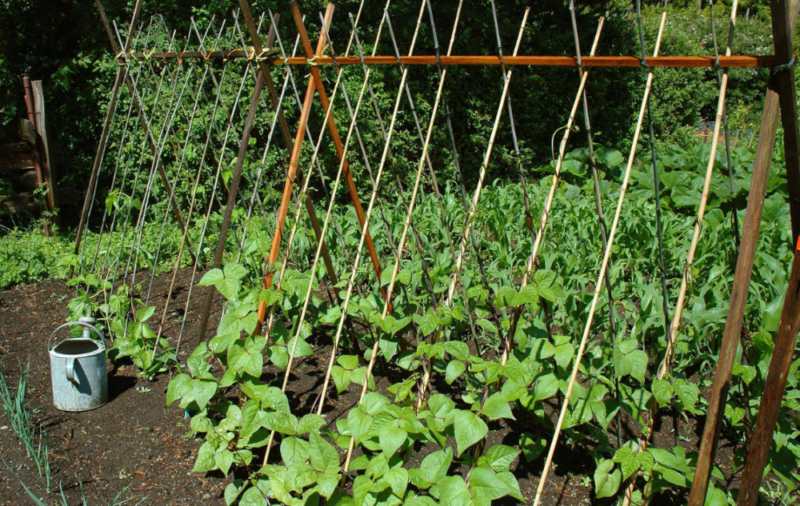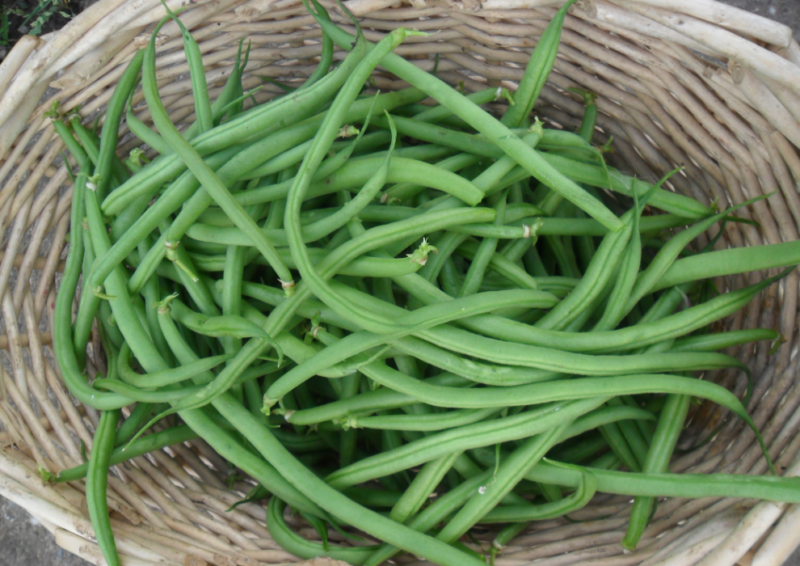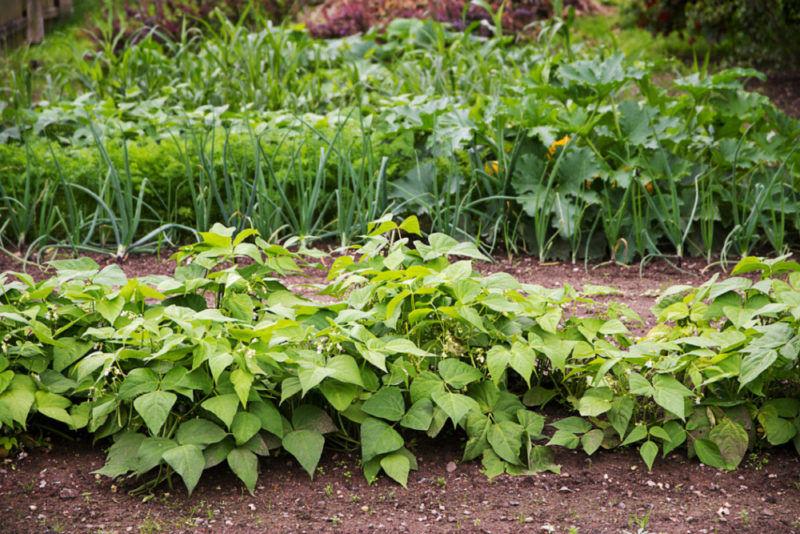Asparagus haricot is a popular agricultural crop loved by many for its softness and delicate taste. Its indisputable advantage is the high content of nutrients. This makes the plant indispensable for people who adhere to a healthy diet. Growing asparagus beans and caring for it is quite simple and not time consuming. Therefore, many are happy to plant it in their plots.
Material Content:
Description of the plant and its characteristics
Asparagus haricot belongs to bean plants. Its pods are slightly longer than other types of culture. And the characteristic hardness of the flaps protects them from pests and external damage. The composition is diverse, includes many useful elements.
With regular use, asparagus beans:
- fights intestinal infections;
- enriches the body with oxygen;
- improves hormonal levels;
- regulates the amount of sugar in the blood.
This type of plant is low-calorie and nutritious, so nutritionists are often advised to include it in the daily menu. But even such a useful product should not be abused. Especially for those who suffer from gastrointestinal diseases.
Beans come in several forms:
- Bush (up to 50 cm).
- Semi-curly (up to 2 m).
- Curly (up to 5 m).
The plant has a very attractive appearance, so it is often used for decorative purposes.
In addition, it perfectly tolerates the shadow, and therefore it is usually planted on the north side of the site.
It is especially interesting to observe the flowering of beans. Depending on the variety, the flowers show a real riot of colors.
Best Asparagus Beans
Planting asparagus beans directly depends on the variety. At first it may seem that they are all the same. This is actually not the case.Even the color of the seeds in each species is special. What can we say about the length of the pods and the size of the harvest. Bean shape and growth rate are also different. Curly grades are the longest.
Ripening dates also vary. Some give two crops during the period, especially in good weather. Others - ripen much longer, but they are more useful. However, here everything is relative: fruitful and healthy species are not always the most delicious. Therefore, you need to select a variety based on personal capabilities and preferences.
Popular varieties are presented below.
Early - collection 40-50 days after sowing:
- Blue Lake;
- Fedoseevna;
- Shade on the wattle fence;
- Gait.
Medium - harvest 60 days after sowing:
- Earring;
- Sissy;
- Anniversary;
- Purple Queen.
Late - collection 80-90 days after sowing:
- Beronia;
- Xer;
- Hope.
And also you should make a choice depending on the region of residence. If the first two types of beans can grow almost everywhere, then the latter is suitable for the southern regions with a hot climate.
Many confuse the bean plant with a bean, expecting the same crop from it. But this culture has other properties and requirements for care. She comes from Asia, so a humid climate suits her.
Preparation and landing
Legume prefers loose, drained, organically enriched soils. Its long roots help to survive any drought. But if the moisture is too long, the plant may die.
Asparagus beans do not like frequent transplants.
It is better to choose a place for the whole season. If a transplant is necessary, you need to take some land from the last garden. It should be planted after cabbage, cucumbers and potatoes.
Seeds are sown dry or previously soaked in water. In the latter case, more intense growth was observed. And you can also add stimulants: honey, ash, humus.
Beans are sown to a depth of about 3-5 cm. It is impossible to plant too deep, otherwise a sufficient amount of oxygen will not come to the plant, it will weaken, seedlings may be delayed.
A pair of seeds is lowered into the recess. Repeat the action every 25-30 cm. The distance between the rows should not be less than 35-40 cm. The first shoots usually appear after a week. If frost is coming, the bed needs to be covered with special material.
Outdoor Care
A month after planting, fertilizing with nitrogen fertilizers is carried out. This is especially true for prolonged droughts, because in such weather the plant can not get enough nitrogen.
If the soil is not too fertile, complex fertilizer must be introduced.
Potassium-phosphorus solution or sprinkling of beds with wood ash helps a lot.
Watering should be moderate: not too strong, but not weak. After planting, the beans are irrigated every other day. With the emergence of seedlings - as needed, when the earth dries. It is best to do this in the afternoon, towards evening, when the sun does not warm the soil too much. Water is poured directly under the root. Stop watering during the appearance of leaves and until flowering. Next, resume irrigation every other day.
Curly asparagus beans are planted on the edges of the plots on special supports. They are made of wood to make the plant easier to curl. And it is also possible to put it on the fence or pole. Strong construction is a hut. It will not bend from the wind, and after curling it will look very nice on the site. Moreover, it is very easy to make: four sticks are dug into the ground at an angle, they are tied with a rope on top for strength, and are strengthened by transverse crossbars on the sides.
Bean is planted on each of the four sides. Such a green hut will be not only a support, but also a nice decorative element.
Harvesting and storage
Pods are used unripe, so it is important not to miss the moment of their collection. Ripening dates directly depend on the variety of asparagus beans.
Collection is carried out daily, tearing the pods in batches.It is in this immature form that they are full of vitamins and nutrients. And thanks to their removal, new ovaries arise.
Harvested beans are eaten fresh, frozen or canned. Store in a cool place, but not more than 2 weeks. Otherwise, it will become rough and stiff. For long-term storage, it is better to use a freezer.
Before freezing, beans are sorted, washed, cut into small pieces, dipped in boiling water for 2-3 minutes. Drying slightly, pack in bags or containers.
And also suitable for eating legumes. But for this it is necessary to wait for full maturity. The pods are softer and easy to open. The grains are dried and placed in a container for storage.
Pest control
In open ground, asparagus beans are not subjected to strong attack by pests such as tomatoes. The main enemy is the grain. This is a small bug that infects plants in the fields and during storage indoors. Before the bean crop ripens, he eats leaves and pollen, then proceeds to eat the pods. If it enters the storehouse for grains, then it begins to make holes in them, laying larvae there.
Methods of struggle:
- Soak seeds in water before planting.
- Remove pods from the beds on time, do not allow overriding.
- Before storing the grain, dry for 10-15 minutes in an oven heated to 45 ° C.
- Store beans only in closed containers.
- Choose cool rooms.
They resort to chemicals only when other methods of control do not bring results. Good help Decis, Aktara, Haupsin.
Sometimes the plant is attacked by a sprout fly. To avoid this, sow seeds as early as possible, and water the soil with infusion of garlic. Processing of beds with tobacco dust also helps.
Combination with other plants
Green beans get along well with onions, cabbage, cucumbers, tomatoes. Planting it is also better in those places where it was these cultures that grew in the past.
But after other legumes, it is not worth planting a crop. A rich harvest in this case does not wait.
Asparagus haricot is a healthy and tasty product. Moreover, painstaking care is not required. Although she took her place on the sites of Russian gardeners quite recently.


















